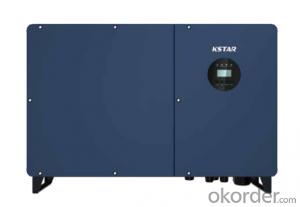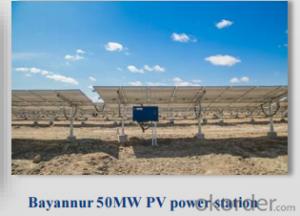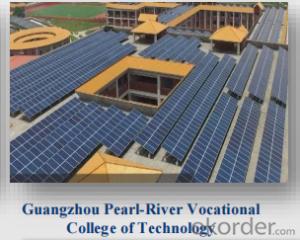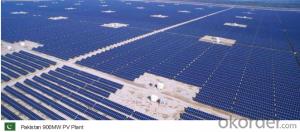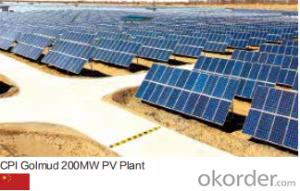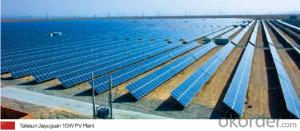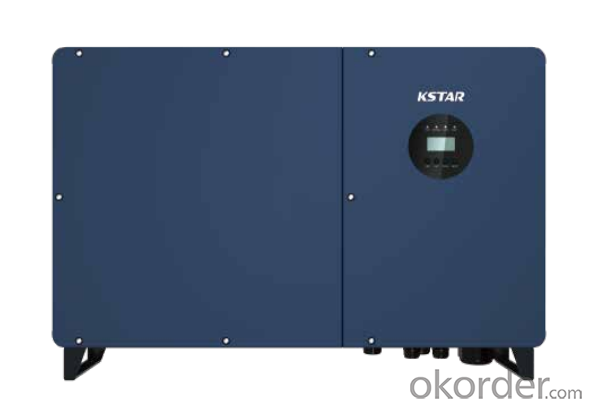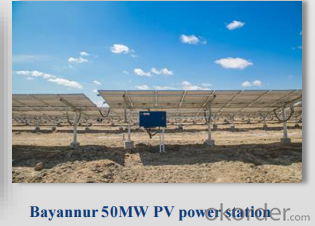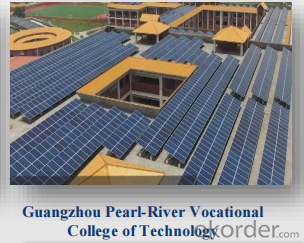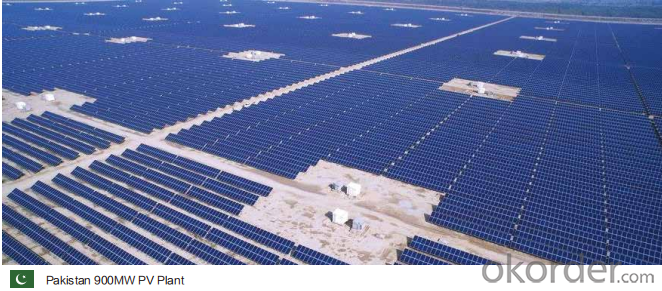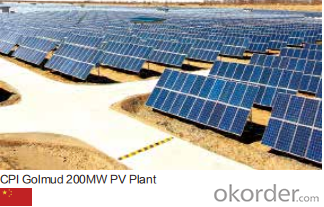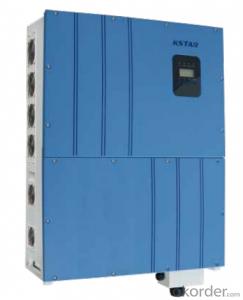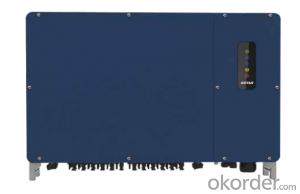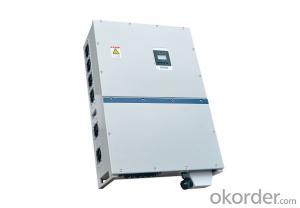3.5kW String Grid-Tied PV Inverter KSG-120CL/KSG-150UM
- Loading Port:
- China main port
- Payment Terms:
- TT OR LC
- Min Order Qty:
- 50 pc
- Supply Capability:
- 15000 pc/month
OKorder Service Pledge
OKorder Financial Service
You Might Also Like
Specification
Product Description:
★1100Vdc,400Vac/500Cac 10/12 MPP Tracker,20/24 PV Strings Input
★Smart I/V Curve Function DC and AC Type II SPD
★Optional AFCI Function Optional Night SVG Function
★LED+Bluetooth APP Max. DC/AC ratio >1.5
Technical Specifications:
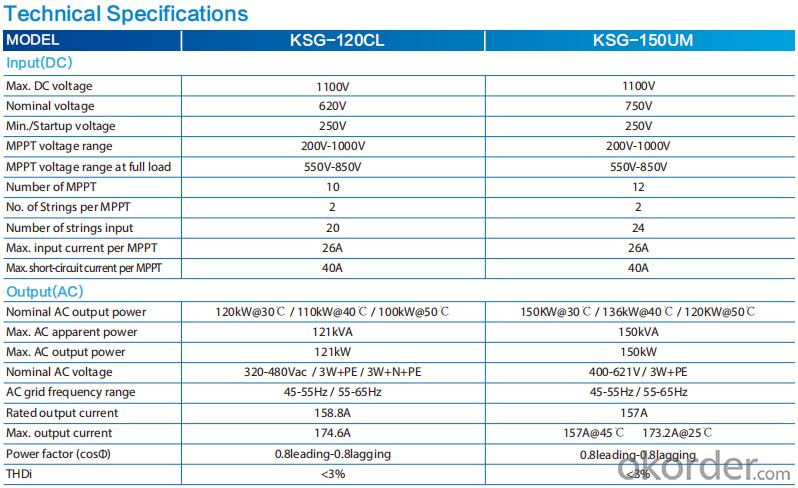
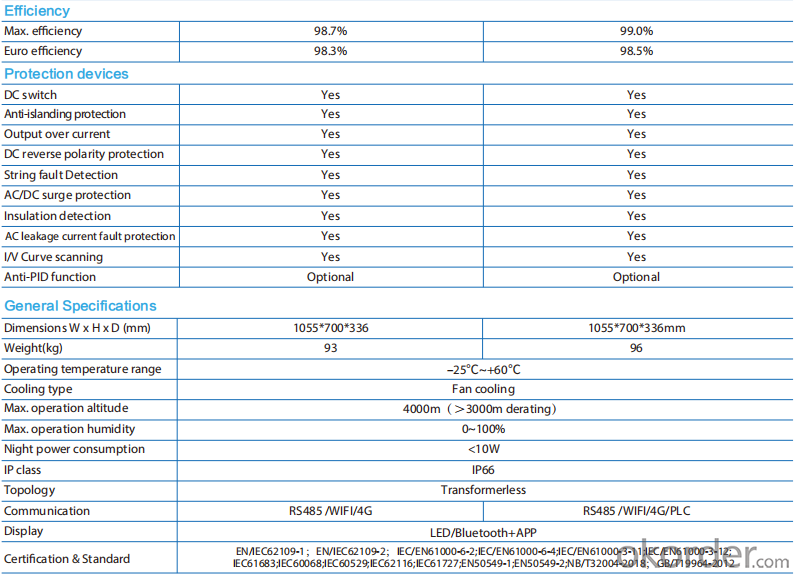
FAQ:
Q:How the output voltage of the PV inverter and the grid-connected voltage are determined
Inverter is the DC power (battery, battery) into alternating current (usually 220V, 50Hz sine wave). It consists of inverter bridge, control logic and filter circuit. Widely used in air conditioning, home theater, electric wheel, power tools, sewing machines, DVD, VCD, computer, TV, washing machine, range hood, refrigerator, video recorders, massage, fan, lighting and so on. In foreign countries
Q:Installation and maintenance of photovoltaic grid - connected inverter
only when the local power sector permission by the professional and technical personnel to complete all the electrical connection before the inverter can be connected.
Q:What is the difference between a PV grid-connected inverter and an off-grid inverter?
Off-grid inverter is equivalent to their own to establish an independent small power grid, mainly to control their own voltage, is a voltage source.
Q:After the PV inverter, how to achieve the same period before the network?
Solar panel simulator: with MPPT function, simulated morning, noon, afternoon, evening, rainy weather, solar panels produced under different conditions in different voltages.
Q:Is the PV inverter a current source or a voltage source?
According to the waveform modulation method can be divided into square wave inverter, stepped wave inverter, sine wave inverter and modular three-phase inverter.
Q:Photovoltaic grid-connected inverter without DC emc how will happen
Solar photovoltaic power generation technology is the use of solar cells, the photovoltaic effect of semiconductor materials, solar radiation can be directly converted into a new type of power generation system, solar energy is a radiant energy, solar power means --- to direct conversion of sunlight Into electricity,
Q:What is the difference between low voltage grid connection and medium voltage grid connection?
For photovoltaic power plants when the power system accidents or disturbances caused by photovoltaic power plant grid voltage drop, in a certain voltage drop range and time interval, the photovoltaic power plant can ensure that non-off-line continuous operation.
Q:Is the grid side of the grid and the inverter?
The grid load side of the grid is the grid. The inverter is an important part of the PV grid-connected system and can not be regarded as an external load. Photovoltaic power generation system is included in both grid and off-grid.
Q:PV grid-connected inverter and independent inverter in the control of what is the difference
The independent inverter in the output voltage phase amplitude of the frequency control is initially set good. Independent inverter, you should refer to off-grid inverter, do not need to consider the grid situation.
Product Images:

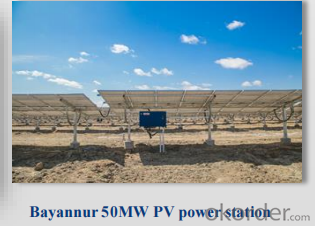
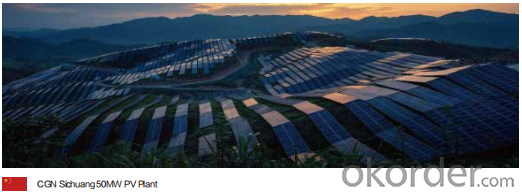

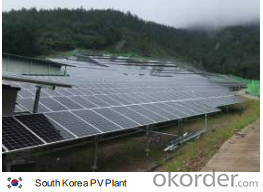
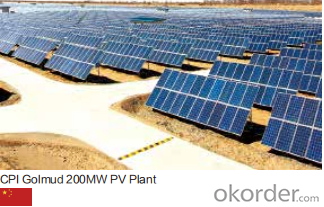

Production Process Photos:

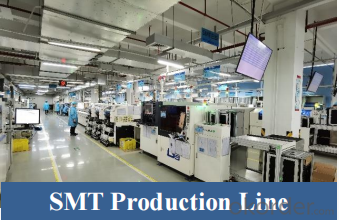
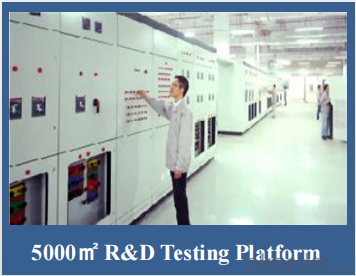
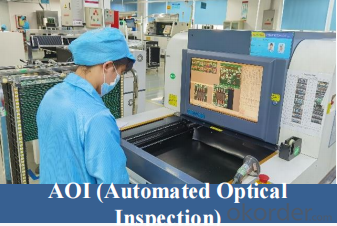
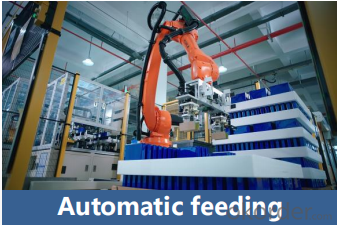
- Q: What are the different types of solar inverters?
- There are three main types of solar inverters: string inverters, microinverters, and power optimizers.
- Q: Can a solar inverter be used in areas with frequent power outages?
- Yes, a solar inverter can be used in areas with frequent power outages. Solar inverters are designed to convert the direct current (DC) electricity generated by solar panels into alternating current (AC) electricity that can be used to power household appliances and electronics. In the event of a power outage, a solar inverter can continue to supply electricity to the connected loads, provided that the solar panels are receiving sunlight. However, it is important to note that a solar inverter alone may not provide a constant power supply during extended power outages unless it is paired with a battery storage system.
- Q: How does a solar inverter affect the overall system performance in different weather conditions?
- A solar inverter plays a crucial role in the overall performance of a solar power system in various weather conditions. It helps optimize the conversion of direct current (DC) generated by solar panels into alternating current (AC) that is used to power homes and businesses. During sunny weather, a high-quality inverter ensures maximum power extraction from the solar panels, resulting in higher energy production and improved system performance. In contrast, in overcast or low-light conditions, a well-designed inverter can still efficiently convert the available solar energy, albeit at a reduced capacity. Moreover, advanced inverters often incorporate technologies like maximum power point tracking (MPPT) to adapt to changing weather conditions, ensuring optimal performance and energy generation regardless of weather variations.
- Q: What is the role of a galvanic isolation transformer in a solar inverter?
- The role of a galvanic isolation transformer in a solar inverter is to provide electrical isolation between the solar panels and the grid, ensuring the safety of the system. It prevents any direct electrical connection between the high voltage DC side and the low voltage AC side, while allowing the transfer of power between them. This isolation protects both the system components and the users from potential electrical hazards, such as short circuits or ground faults. Additionally, the galvanic isolation transformer helps reduce noise and interference in the system, enhancing the overall performance and reliability of the solar inverter.
- Q: How does a solar inverter handle grid faults or disturbances?
- A solar inverter handles grid faults or disturbances by quickly detecting any changes in the grid voltage or frequency. When a fault or disturbance occurs, the inverter's protective features activate, causing it to disconnect from the grid momentarily. Once the fault or disturbance is resolved, the inverter automatically reconnects to the grid and resumes normal operation. This ensures the safety of the solar system and prevents any damage to the inverter or the grid.
- Q: What certifications should I look for when choosing a solar inverter?
- When choosing a solar inverter, it is important to look for certifications such as UL listing, IEC 61727 compliance, and IEEE 1547 compliance. These certifications ensure that the inverter meets safety and performance standards, and is compatible with grid connection requirements.
- Q: Can a solar inverter be used off-grid?
- Yes, a solar inverter can be used off-grid. Off-grid solar systems typically include batteries to store excess energy generated by the solar panels. The solar inverter converts the direct current (DC) power from the solar panels into alternating current (AC) power, which can be used to power household appliances and devices. This allows for the use of solar energy even when there is no access to the main electricity grid.
- Q: How does a solar inverter affect the overall system efficiency at different temperatures?
- A solar inverter can affect the overall system efficiency at different temperatures by adjusting its power conversion efficiency based on the temperature conditions. In hot temperatures, solar inverters can experience lower conversion efficiencies, resulting in decreased overall system efficiency. This is due to increased internal resistance and heat losses in the inverter components. On the other hand, in colder temperatures, the inverter can operate more efficiently, as lower temperatures generally lead to reduced internal losses and improved performance. Therefore, the temperature conditions can have an impact on the efficiency of a solar inverter and subsequently affect the overall system efficiency.
- Q: Can a solar inverter be used in a floating solar system?
- Yes, a solar inverter can be used in a floating solar system. The purpose of a solar inverter is to convert the direct current (DC) generated by solar panels into alternating current (AC) that can be used to power electrical devices. In a floating solar system, the solar panels are mounted on floating platforms or structures on water bodies. The solar inverter is still required to convert the DC power generated by the panels into AC power that can be used by the electrical grid or connected devices.
- Q: How does a solar inverter affect the overall energy consumption of a property?
- A solar inverter affects the overall energy consumption of a property by converting the direct current (DC) electricity produced by solar panels into alternating current (AC) electricity that can be used to power electrical appliances and equipment in the property. It ensures that the electricity generated by the solar panels is compatible with the property's electrical system, reducing the dependence on grid-supplied electricity. By efficiently converting solar energy into usable electricity, a solar inverter helps to lower the property's energy consumption from traditional sources and can potentially result in energy cost savings.
Send your message to us
3.5kW String Grid-Tied PV Inverter KSG-120CL/KSG-150UM
- Loading Port:
- China main port
- Payment Terms:
- TT OR LC
- Min Order Qty:
- 50 pc
- Supply Capability:
- 15000 pc/month
OKorder Service Pledge
OKorder Financial Service
Similar products
Hot products
Hot Searches
Related keywords
